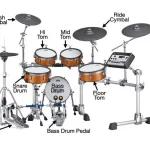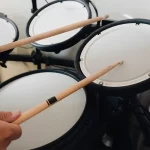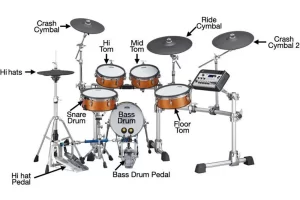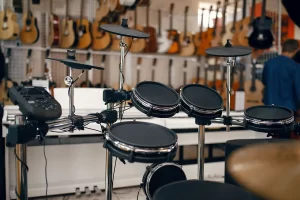When it comes to using any instruments, tuning is a crucial step. Ignoring it might render your instrument all but unusable.
Nevertheless, regardless of your expectations for unpitched instruments like the drums, they must be tuned. Given that the instrument doesn’t go too sharp or flat, for that matter, this tuning is more than crucial.
We are here to assist you with this helpful guide if you are new to the idea of drumming and are not much familiar with how to precisely go about tuning the drum set.
What Makes Tuning Your Drums Important in the First Place?
Now that most of you are just getting started, you might wonder why you should tune your drum kits. Although most musical instruments lack a basic pitch, such as the drums, others have overtones.
Well, tuning the drum sets becomes crucial for this pitch balance and to make it sound better than good. This is done to ensure that the system as a whole sound excellent as a kit. It’s crucial to tune the drum sets so that they sound more than just good on their own and have the proper ring and resonance.
The snare, kick, hi-hat, tom, and cymbals make up a typical drum set for beginners. Each of these components can be altered and tuned to various unfixed pitches. In order to avoid undesired overtones, drums must be regularly tuned unless they are used to perform a certain type of music that requires a particular pitch.
There are numerous ways to accomplish this, but we’ll break it down into six parts so you can comprehend it more clearly. Depending on your settings and how well you tune it, there is no right or wrong method to tune a drum set.
Let’s break down what needs to be done in this tuning process step by step.
Tuning in a Drum Set: What Needs to be Done
Getting a drum tuner
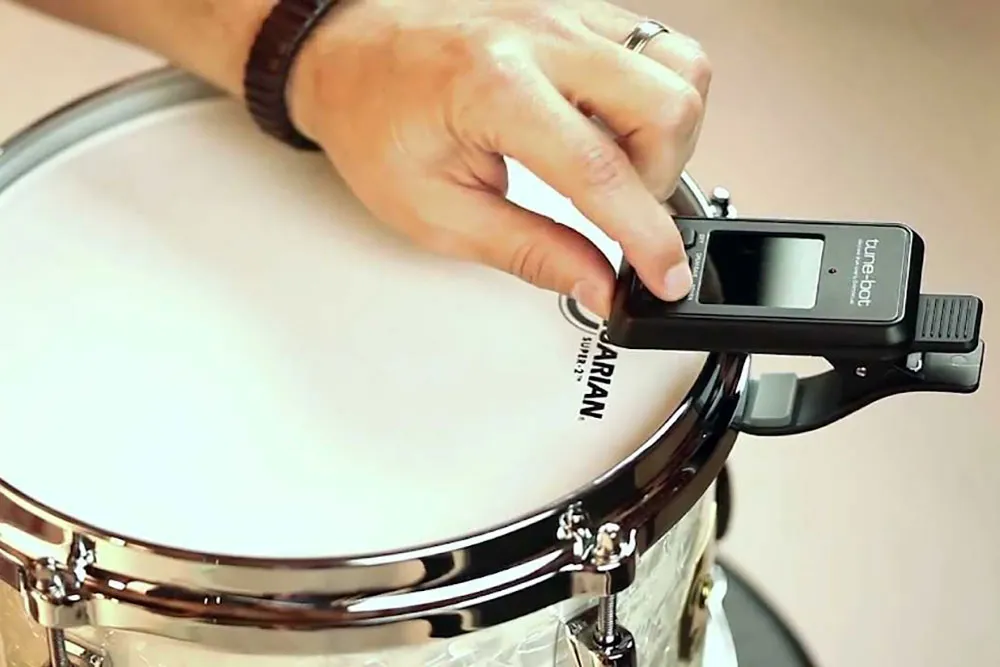
In order to reach excellence in the tuning process as a beginner, you must be tolerant of the characteristics of the drums’ ancillary equipment.
Since the drums are not tuned to a certain pitch, you first need to get a suitable and very sharp tuning instrument. The majority of seasoned drummers tune their drums by ear.
However, if you are a beginner drummer, it would be worthwhile to invest in tuning to support you. A drum tuner is nothing short of a wonderful ally when you’re just starting out with your lessons.
Releasing the drum head’s tension
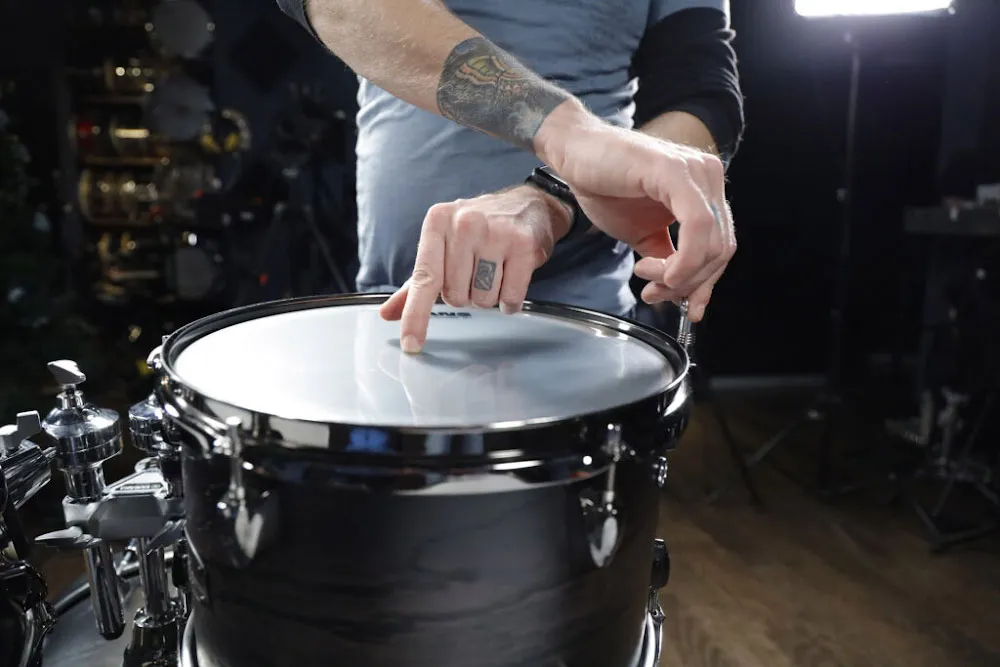
The batter and resonant heads are the two different types of heads that come with drum sets. The top head is the batter head, and the lower head is the resonant head. The tension rods on the drum’s sides must be turned counter clockwise in this stage to loosen the heads completely.
After that, you should clean the bearing edge and wipe the heads down. The edge of the drum shell touches the skin at this location. Replace the drum heads and tighten the tension rods once you have finished cleaning everything.
Constricting of the head
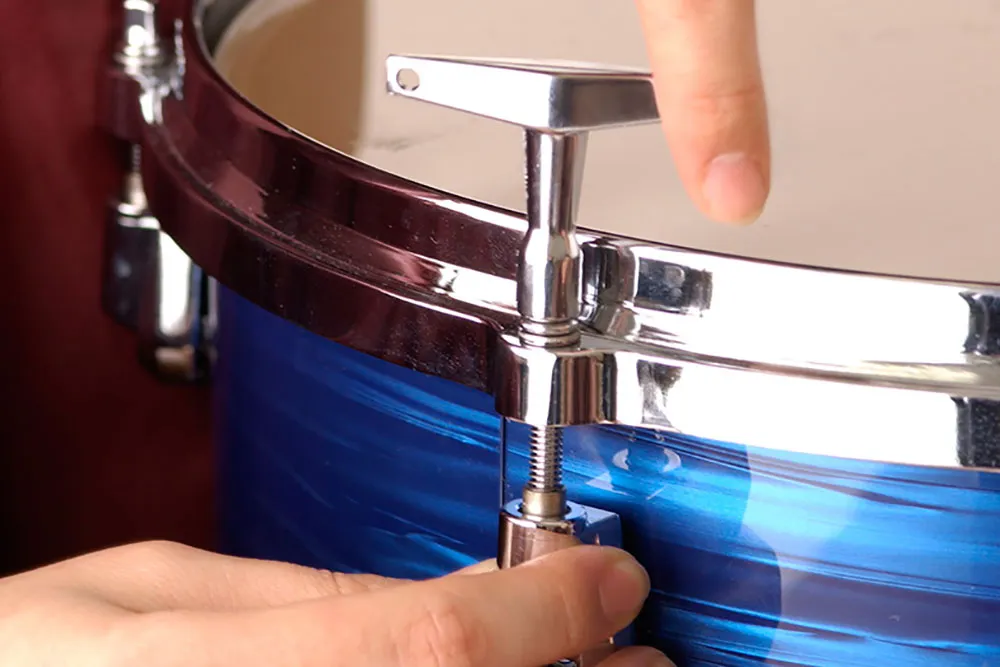
Using the drum key, you must now tighten the rods on the drums’ sides. The tension rod must then be turned off in the same period of time, either by making a full turn or more turns.
The lugs would then need to be adjusted to form the crisscrossing pattern. The next thing to tighten is at six 0’clock, for instance, if you start it at the starting position of 12 0’clock. Then nine o’clock would come after that, and so on.
After the drum heads are in place, you can change the pitch by either tightening or relaxing the tension rods. It would help if you tightened the rods counter clockwise to achieve a higher pitch. You can also try to loosen the rods in an anticlockwise orientation to get a lower pitch. Additionally, you must measure each lug’s tension using the drum tuner.
Rechecking and changing the pitch of the drums
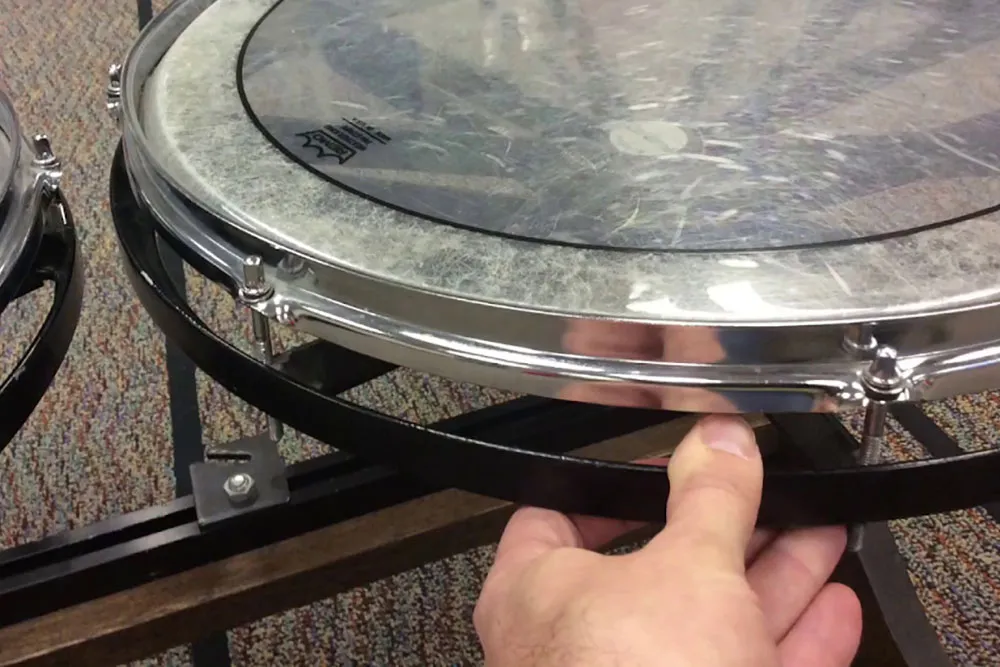
Now, there’s a good probability you’ll have to tweak, play, and recheck the tuning procedure. This is due to the fact that you cannot expect to get the required results in the allotted period. You would have to cooperate somewhat.
Once you’ve achieved the desired pitch, fine-tune the tension rods. After each tension rod has been tuned, you can slap the drum head. Both the middle and a few inches from the rim are suitable locations for this.
The tension rods can then be adjusted till the proper sounds reach your ears.
Dampening of the drums
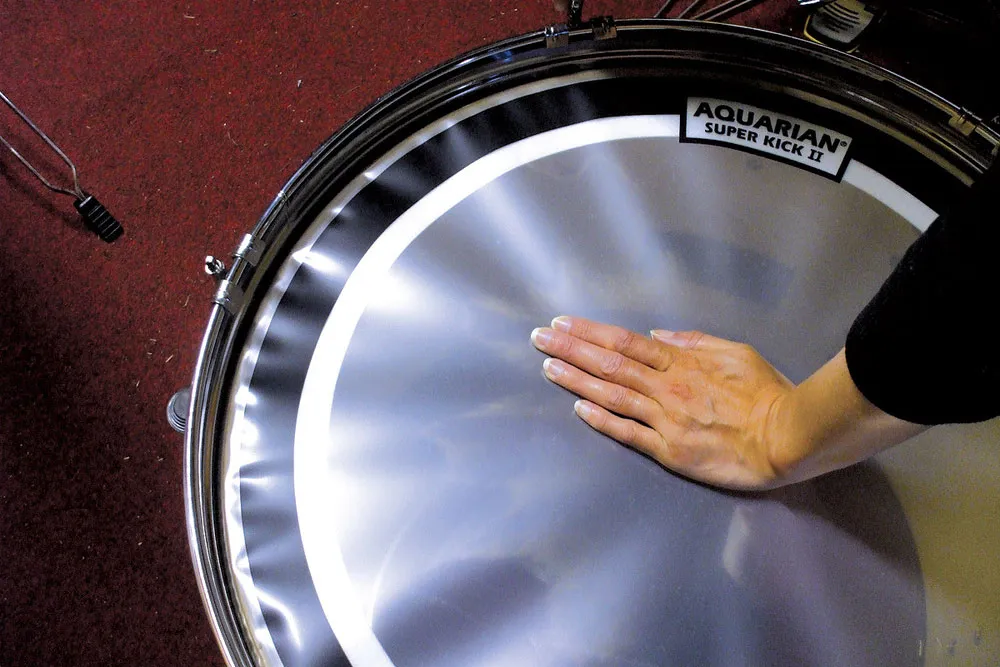
Your drums sound purer when dampened or muffled because undesirable pitches and overtones are eliminated. To get the best results for this, apply a dampening gel to the heads of the floor tom, snare, and other drums in this stage.
For the bass drum, other options include a piece of cloth, an old drum head, or a pillow. All you have to do is exercise a little caution throughout the process to avoid affecting the drum set’s sound quality, pitch, or capacity to produce sound. Therefore, be sure to perform the necessary actions to adjust the set in the best way possible.
Repeating Step
It’s critical that you follow these instructions again with each drum in your drum set now that you know what must be done and in what order.
You have to go about repeating the procedure from head to toe in all of the drums in the kit, from cleaning to de-tensioning.
Due to the advantages you receive, tuning as a process cannot be disregarded. There are several benefits to tuning the drum set correctly, leaving no room for undertone or overtone concerns, from pitch balance to tuning in the right method. So, try out tuning the best of the way with these steps.
Drum tuning for Various Musical Genres

Different musical genres and tunes may be about various tunings. You must put in a lot of effort during this tough time, from selecting the song to tuning your drum set appropriately.
By genre, some tuning fundamentals are as follows:
Rock music drum tuning
The majority of rock drummers who are knowledgeable about drum tuning choose the larger drums that are tuned relatively lower. They are able to reduce the resonance of the toms in this way. The crack of the snare is given a great deal of attention.
Pop music drum tuning
Compared to louder rock, this form of music calls for a more balanced, open, and resonant sound. The majority of pop drummers use medium-sized drums that are tuned to provide an even musical sound. As long as you have an ideal strategy, tuning is never an easy process to approach.
Therefore, please put all your work into getting the perfect sound and make the most of the music genre to tune your drum set in accordance with its needs.
Metal music drum tuning
Tight, focused, and heavy metal drumming is necessary or preferred by heavy metal drummers that have advanced through several levels to reach the ideal platform of being superb drummers. Drums are often tuned low and bigger. But in this instance, the snare is adjusted higher to provide more volume and to stand out in the mix. The set’s kick drum is adjusted to highlight the beater’s attack.
Jazz drummer tuning
Jazz drummers frequently tune their drums higher and aim to achieve this with as much resonance as they can. Usually, the drums are smaller, making it easier to achieve a higher tune.
Always remember that you can rely on the drum tuning charts and that little healthy experimentation can help you get the desired results. Therefore, follow the principles at all times and keep fine-tuning until you achieve the intended outcomes.
The next stage in knowing is to know exactly how to play the drum set after you have bought the perfect drum set and learned how to tune it. Understanding this stage can be very challenging, but once you do, you will be able to tune in to the set to perfection on your own.
To avoid the danger of being on the verge of tuning, all you need to do is follow the proper instruction and become aware of the minor details from the helpful guides.
Encapsulating it
If you know exactly what is happening at each step, tuning and playing the drums won’t get boring, no matter how experienced you are.
Rudiment to tuning is a breeze as long as you are aware of all the trends and comprehend the severity of the necessity. To find out how quickly you can play or tune in to the drum set according to your demands and preferences, you can also go about having a session on YouTube.
So, use your best judgment to advance in the tuning game.
You can click the link to see a video to learn more.


